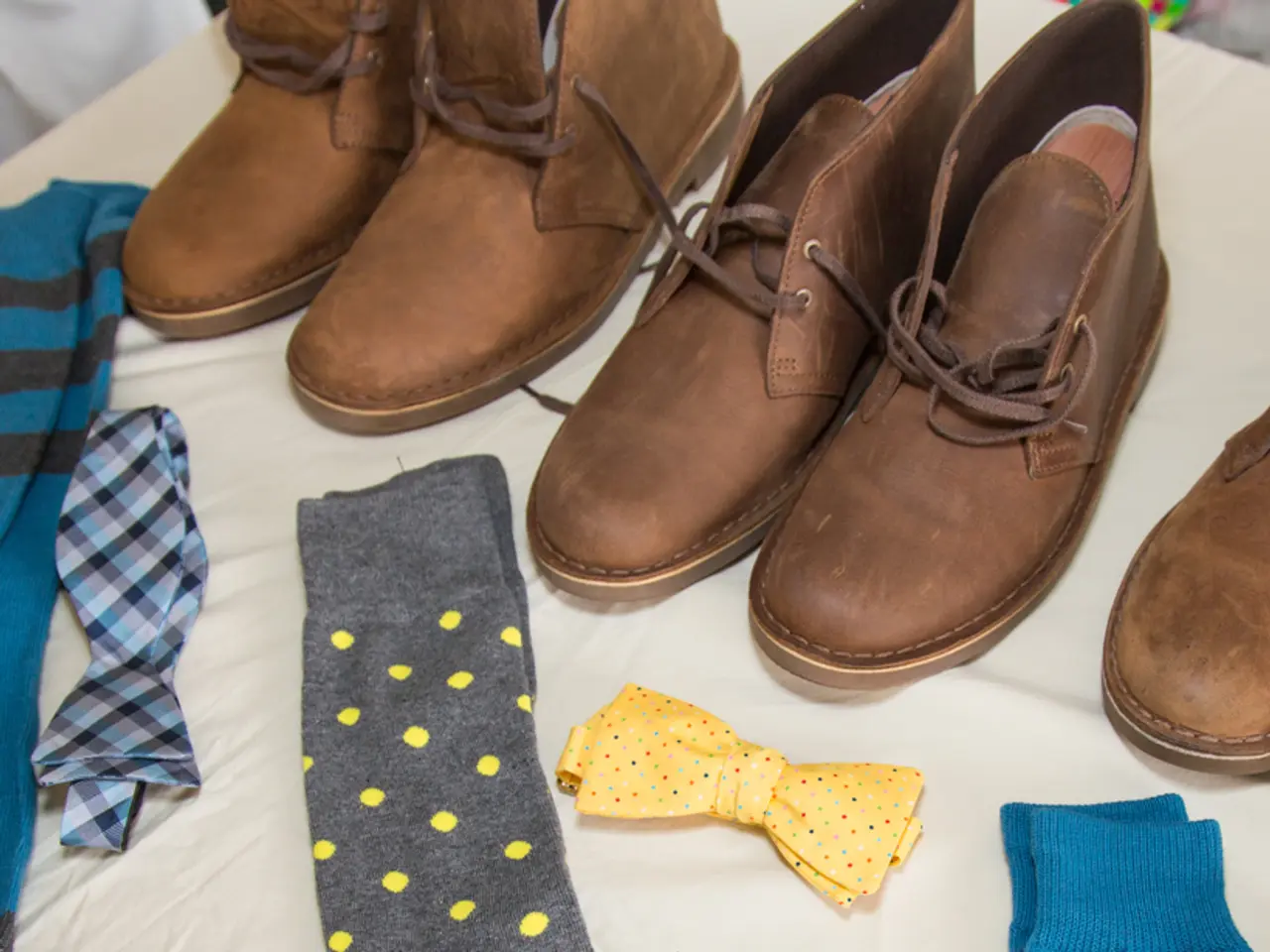Eco-Friendly Fashion Strategies
In the ever-evolving world of fashion, the call for sustainability is growing louder. Sustainable fashion, a movement that prioritizes environmentally and socially responsible design, production, and consumption of clothing and accessories, is gaining traction among consumers and industry leaders alike.
However, achieving a sustainable fashion industry-wide is no small feat. A myriad of challenges stand in the way, from environmental impact and overproduction to fragmented supply chains, high capital costs, data and measurement deficiencies, cultural and knowledge barriers, price and economic challenges, labor and social issues, weak policy enforcement, and volatility in energy markets.
Fast fashion, with its rapid production cycles and constant demand for new trends, causes significant environmental harm. Textile waste, greenhouse gas emissions, water pollution, and microplastic pollution in oceans are just a few of the issues that arise from this industry's unsustainable practices. Overproduction leads to waste and economic strain, while the highly fragmented supply chain complicates collective sustainability efforts.
Many small- and medium-sized textile mills, operating on tight margins, find it difficult to finance costly retrofits like clean energy boilers, solar thermal systems, and automated dyeing machines essential for decarbonization. A lack of tools and consistent metrics makes it hard for mills and brands to measure emissions baselines, track progress, or calculate return on investments from sustainable interventions.
Resistance to change, language barriers, fear of disrupting production, and limited awareness hinder the adoption of sustainable technologies and processes among industry workers and stakeholders. Sustainable materials and processes are often costlier, creating pricing tensions between brands and consumers. The economic model of fast fashion with low-cost, high-volume production conflicts with sustainability goals.
Fast fashion’s pressure for rapid, low-cost production results in poor working conditions, low wages, unsafe environments, and labor exploitation across global supply chains, particularly in developing countries. Even where sustainable policies or environmental regulations exist, enforcement is often weak, allowing carbon-intensive and unethical practices to continue unchecked.
Fluctuating prices for fossil fuels and renewable energy complicate investment decisions for mills trying to upgrade to more sustainable technologies. Overcoming these challenges requires coordinated industry efforts, government support, financing innovations, transparent data systems, stakeholder education, and shifts in consumer behavior toward valuing sustainable fashion.
Despite these challenges, there are ways for consumers to make a difference. By choosing to buy from brands that prioritize sustainable practices and by extending the lifespan of their clothing through repair, upcycling, and recycling, consumers can support sustainable fashion. Incorporating sustainable fashion into a wardrobe can be achieved by investing in timeless, high-quality garments made from durable materials. Exploring second-hand or vintage clothing options can help extend the lifespan of garments and reduce demand for new production.
Adopting mindful consumption habits such as repairing or upcycling clothing items can help extend their lifespan and contribute to a more sustainable wardrobe. Some sustainable fashion practices include using organic and recycled materials, reducing water and energy consumption during production, implementing ethical labour practices, and promoting transparency in the supply chain.
Sustainable fashion is important because it aims to reduce the negative impact of the traditional fashion industry on the environment and workers' rights. By making conscious choices, we can help create a fashion industry that is not only stylish but also sustainable and ethical.
References:
- McRae, A. (2020). The environmental impact of the fashion industry. BBC Future. Retrieved from https://www.bbc.com/future/article/20200316-the-environmental-impact-of-the-fashion-industry
- UNEP (2020). The roadmap for a sustainable textiles industry. United Nations Environment Programme. Retrieved from https://wedocs.unep.org/bitstream/handle/20.500.11822/111992/SustainableTextilesRoadmap.pdf
- Greenpeace (2011). Detox: Fighting for a Toxic-Free Future. Greenpeace. Retrieved from https://www.greenpeace.org/international/campaigns/toxics/detox/
- Ellen MacArthur Foundation (2017). A new textiles economy: Redesigning fashion’s future. Ellen MacArthur Foundation. Retrieved from https://www.ellenmacarthurfoundation.org/assets/downloads/publications/A-New-Textiles-Economy-20170612.pdf
- Fashion Revolution (2020). Who made my clothes? Fashion Revolution. Retrieved from https://www.fashionrevolution.org/who-made-my-clothes/
- A shift towards sustainable interior-design, aligned with sustainable fashion, can contribute to a home-and-garden lifestyle that promotes a sustainable living, by choosing eco-friendly materials and decor.
- As the lifestyle trend of sustainable living evolves, it is essential to extend the mindful consumption habits from fashion-and-beauty to home-and-garden, including sustainable interior-design and smart usage of resources.
- By embracing sustainable practices in both fashion-and-beauty and interior-design, consumers can make a profound impact on their lifestyle, promoting a more sustainable living while maintaining a stylish and ethical environment at home.




